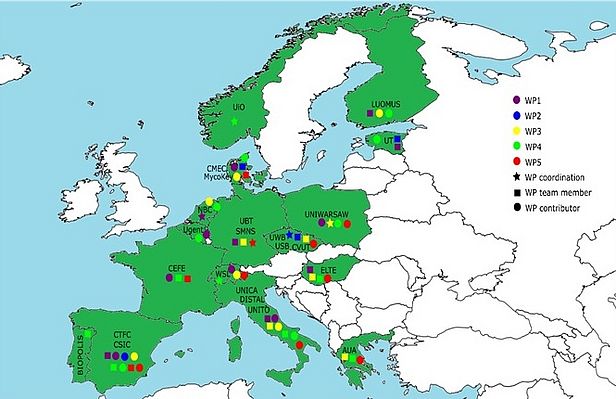The FunDive project – Creating a better basis for fungal protection in Europe
2024 - 2026
Cooperation FinancingFungi are one of the largest groups of organisms in the world and are central to the functioning of ecosystems. Despite their demonstrable importance, fungi have so far been neglected in biodiversity conservation. This project contributes to the knowledge of the diversity of fungi in Europe and thus improves the basis for their protection.
Content and aims of the research project ¶
Knowledge about the diversity of fungi, their distribution and ecology is still limited. This makes it difficult to define efficient protection measures. The four core topics of "diversity", "distribution", "ecology" and "protection" will be addressed in this three-year research project. We will isolate DNA from environmental samples such as soil, air or dead wood in sample areas throughout Europe and determine the fungal communities using modern DNA sequencing methods. On the same plots, fungal species will also be surveyed using traditional methods, which will allow us to better assess the advantages and disadvantages of the two methods. This will be done with the help of both professional and amateur mycologists. The data should help us to learn more about the general distribution patterns, habitat requirements and the rarity or need for protection of fungi. At the same time, we want to improve DNA databases for the genetic identification of fungi so that species can be recognised with greater precision in environmental DNA data. Fungal specimens from herbarium collections (so-called fungaria) are important here, many of which have still not been genetically characterised.
The project deals with both basic and applied research and lays important foundations for the implementation of measures for mushroom conservation in Switzerland and throughout Europe. The involvement of amateur mycologists from national mycological societies and representatives from national nature conservation agencies will hopefully help to raise awareness of the importance of fungi so that they are increasingly included in conservation and promotion efforts.

